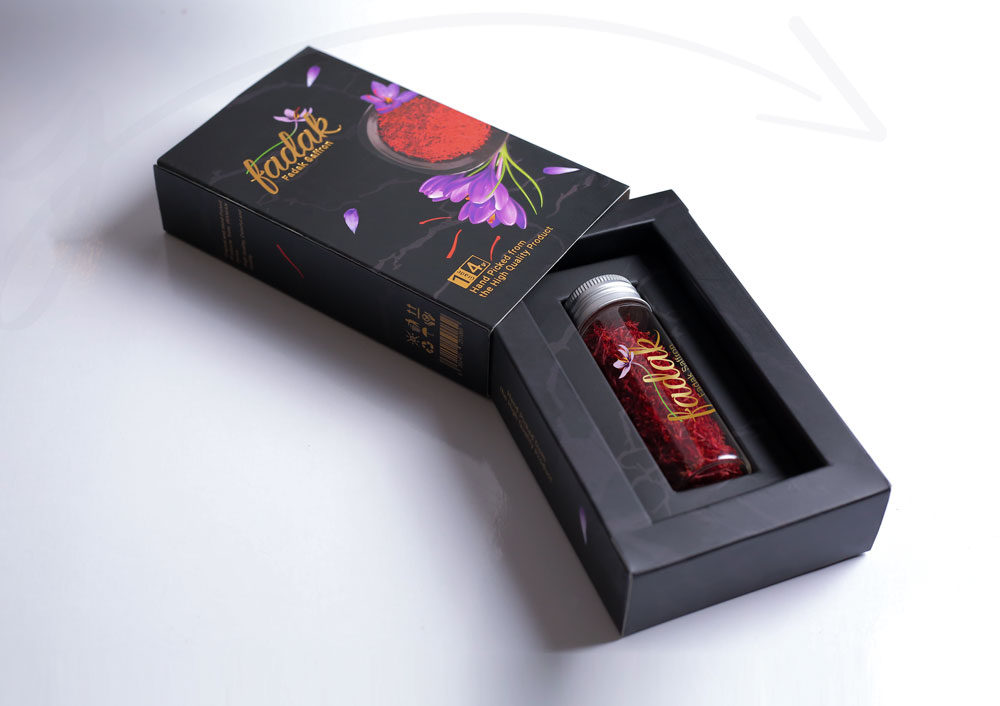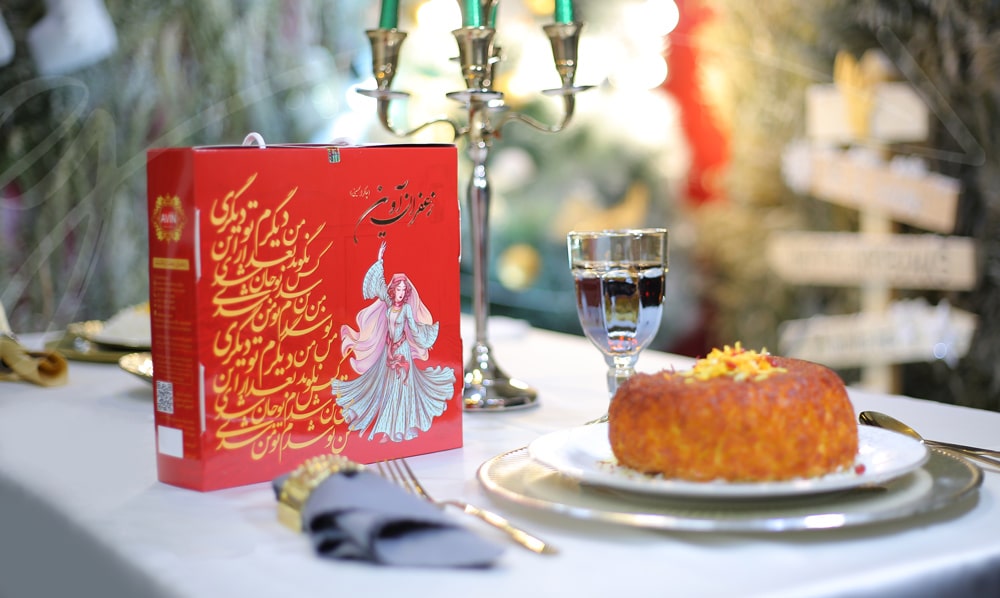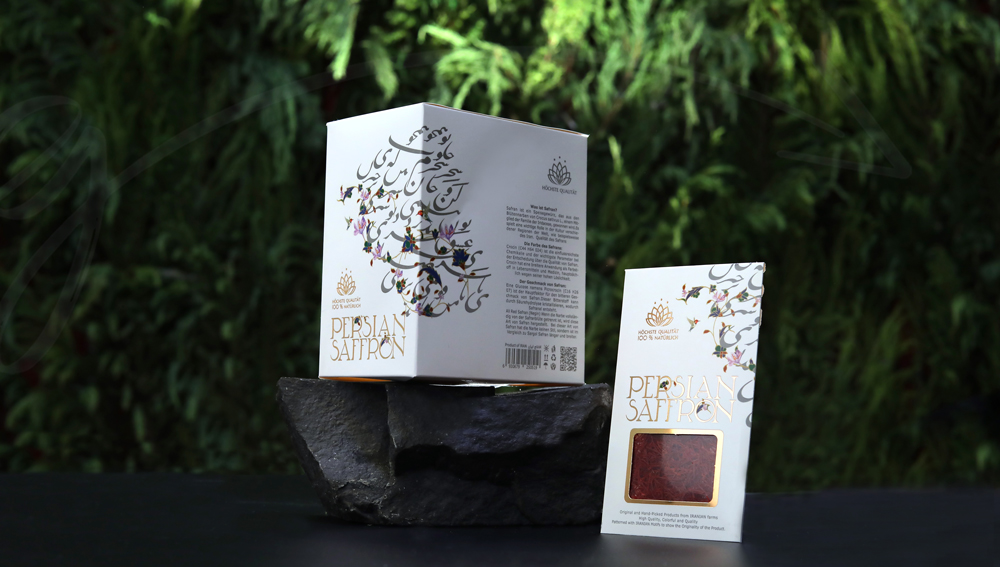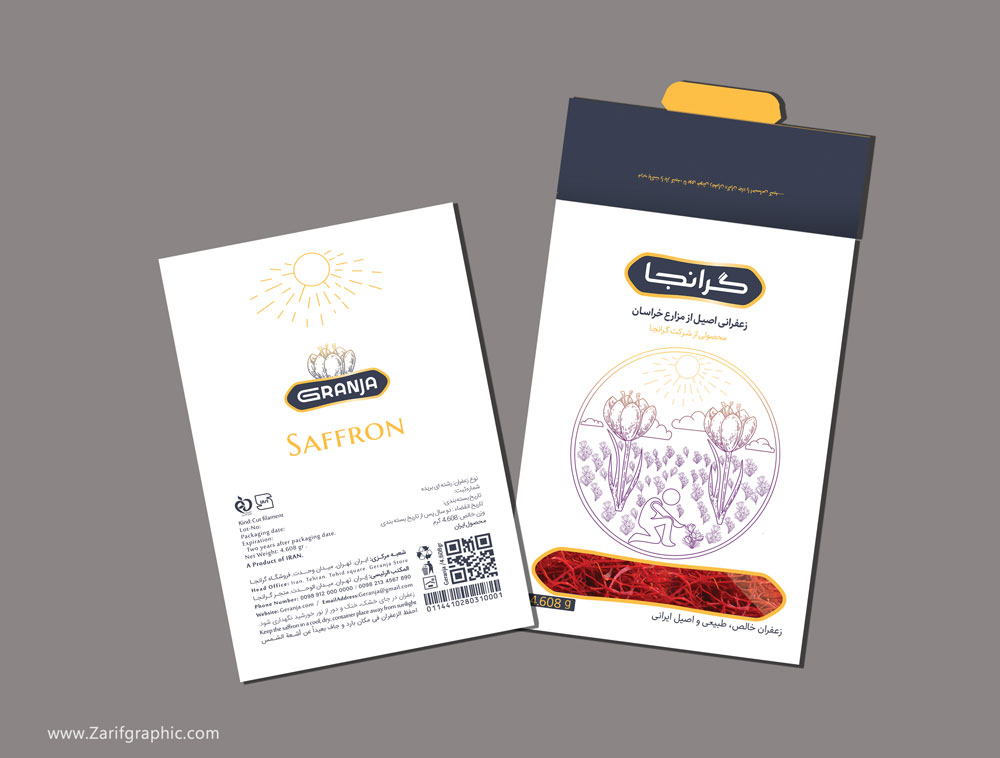Saffron, the golden spice, has been around as a food treasure for centuries, and for good reason; its unique flavor, medicinal properties, and distinct aroma have made it a beloved ingredient. Today, it remains a highly sought-after ingredient worldwide, commanding a premium price.



Why should you and your business care about Packaging Saffron?
Even beyond the saffron industry, packaging still plays a crucial role as it not only ensures the safety of your precious product but also looks appropriate on any market. But let’s face it:
Saffron is not just any market. The product you're selling, known as the "red gold," is a highly delicate and not to mention expensive spice due to its difficult-by-hand harvesting.
Still, if you need more reasons, here are some interesting ones:
1. Protection: Saffron is vulnerable to external factors such as light, moisture, heat, and air, which can and will decrease its quality. Proper packaging will provide a standard protective barrier, preventing exposure to these elements while keeping all the saffron goodies like flavour, aroma, and vibrant colour.
2. Shelf Life Extension: since saffron is delicate, it has a limited shelf life. Packaging is here to retain saffron's freshness and prevent oxidation to significantly extend its shelf life and ensure that consumers get a fresh, high-quality product.
3. Branding and Differentiation: you see, saffron is an amazing and (as already mentioned) very expensive product compared to other spices, which tend to attract fraud. There are fake and bad quality saffron products mixed with other herbs, safflower, to even dyed horse hair!
Packaging is not only the face of the product but also represents your brand – the whole image of your business. It acts as a marketing tool, especially for products such as saffron that need not just to grab attention but also make the impression of original, high-quality saffron.
Creating a unique, Eye-catching identity for your saffron products will help distinguish one brand from competitors and attract loyal customers.
4. Convenience: Packaging saffron in user-friendly containers or sachets makes it easier for consumers to handle and measure the desired quantity. Properly packaged saffron eliminates the need for additional storage containers and ensures ease of use.


What Type of Saffron Packaging Should I Use?
It's no secret that maintaining saffron's freshness and appeal is packaging job number 1. That's why knowing what kind of packaging you'll be using is important. Here are some common types of saffron packaging that you might want to consider:
1. Glass Jars: a popular choice for saffron packaging. Why? They're simply transparent. That allows consumers to see the quality of the product and decide whether or not they like what they see. Quality Glass jars also protect against light (in case that was a concern) and are often equipped with airtight lids to maintain freshness.
2. Metal Tins: such as aluminum or tin-plated steel, offer durability and protection against light, moisture, and air. This type of packaging can be resealed to preserve the saffron's quality. More importantly, they have a noble-classic appearance, which is perfect for the product you’re presenting. That is actually why they’re commonly used for higher-end saffron.

3. Plastic Containers: another good is plastic containers, such as PET or HDPE, which are lightweight, shatterproof, and cost-effective for those with low packaging budgets. They additionally provide good moisture and light protection while being easy to handle and transport.
4. Sachets: Individual sachets or pouches are a convenient option for packaging saffron in small portions. They are often made of foil or laminated materials to provide another affordable option. Sachets are popular for single-use applications or for providing samples to customers.
Note: the packaging we mentioned above is usually for primary packaging that contains saffron. We recommend having a secondary one (or even tertiary) to have more design advantages on luxury box packaging.

What information does saffron packaging design include?
Generally, you want your Saffron packaging design to include the following information:
1. Product Name: The product name should be clearly visible and prominently displayed on the packaging.
2. Ingredients: All ingredients used in the product must be listed on the packaging. This is important for people with allergies or food sensitivities.
3. Net Weight: The net weight of the product should be listed on the packaging in either ounces or grams.
4. Country of Origin: The country where the saffron was grown and harvested must be disclosed on the packaging.
5. Storage Instructions: It is important to include proper storage instructions on the packaging to ensure the product stays fresh and maintains its quality.
6. Expiration Date: This lets the user know when the product is no longer safe to consume.
7. Production Date: The date when the saffron was packaged should also be included on the packaging.

Saffron Packaging Design Characteristics
So we're already familiar with different types of saffron packaging and what its content is about, but there's one factor (maybe the most important one) we haven't addressed just yet: the design. The thing that'll ultimately determine the fate of your product's success. Packaging design is here to make sure the premium nature of saffron is well presented.
So, in the following we’ll be covering must-know tips and ideas about your saffron packaging design:

1. Elegant and Minimalist Design
Minimalism isn't just a fancy word that advertisers use to convey luxury. it's a concept that refuses to distract or trick the potential customers or waste their time. they go straight to the point focusing on what matters. and the best part? your customer knows it. in a world of information overload when they see something that's mindful with their words and image, they can't help but pay attention. packaging design is also characterized by simplicity, sophistication, and a focus on the essentials. But what does minimal design mean exactly? It means it follows some patterns of the following methods:
- Clean lines: you want your packaging to feature clean, simple lines that can create a sense of order and balance in the design.
- Limited color palette: typically, you can’t bring a rainbow of colors in your design and still call it minimal. Using a limited color palette, especially with neutral colors like black, white, gold and gray, can create a sense of elegance and nobility. But don’t forget that your packaging design is for saffron. So generally, colors like red or purple gives a mysterious hint of your packaging content to your potential customers. But we’ll fully get to that later.
- Minimalist typography: Take a look at this: Would you ever try to read something like this on a packaging when passing by a store shelf? probably not! As good as it might look for a design element, you wouldn't bring yourself to even notice it. Typography is where clarity take it’s stand. In packaging your words grab attention just as much as your design and so the typography used in it should be simple to understated.
- Negative space: is nothing but the white or black area around and between design. This space is left blank intentionally, without any design elements or content. Negative space is and always will be the key of maintaining contrast and balance in your saffron packaging design. Furthermore it creates the elegance and simplicity that makes a minimal and engaging packaging design.

2. Choose high-quality materials
While striving for the perfect design, keep in mind that packaging serves as a protective measure. It not only safeguards the product but also the brand itself. A negative experience of receiving a damaged product can leave a lasting impression on customers. While visual identity and packaging can be redesigned to enhance their appeal, rebuilding a tarnished brand reputation won't be an easy task. That why you need packaging materials that are durable and can protect the product in any situation. As already mentioned in the above types of packaging, you need to consider every option and decide what kind of packaging you want for you saffron product.
3. Use Window packaging!
Imagery has always played a significant role in packaging design. However, in recent years, more and more companies have been dishonest by showcasing fake or edited images of their products. As people have become aware of this pattern, they've got immune and felt indifferent towards product images. This is where a window in your packaging can come into play, as it shows that you have nothing to hide. This live display makes your product (and brand) trustworthy, leaving no doubt for potential customers to purchase your saffron. While this is always optional, you might want to consider using window packaging to allow customers see the vibrant red threads of saffron. Undoubtedly, this creates enticing visual display and showcase the product's quality.






Comments (0)